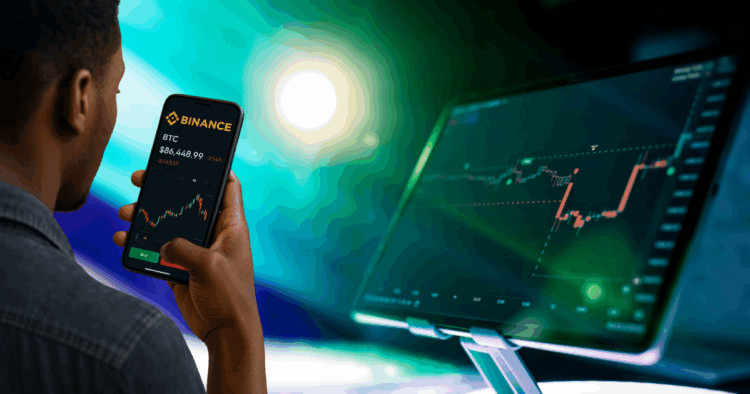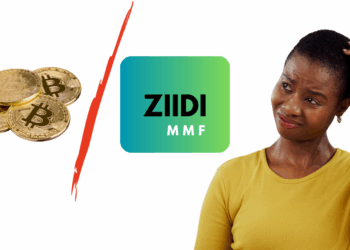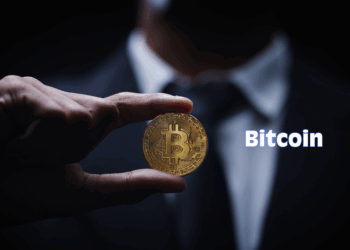Rhema Festival was a hit, and the political conundrums continue, but what about Bitcoin in Kenya? In Kenya’s fast-evolving digital economy, a quiet financial revolution is gaining momentum. It’s not driven by banks, government policy, or legacy institutions—it’s driven by ordinary Kenyans armed with smartphones, curiosity, and ambition. At the heart of this movement is Bitcoin in Kenya, along with the unlikely yet powerful alliance between Binance, the world’s largest cryptocurrency exchange, and M-Pesa, Kenya’s most trusted mobile money platform.
This isn’t just a story about technology—it’s an expression about access, empowerment, and the redefinition of financial identity. From university students in Eldoret to entrepreneurs in Nairobi’s CBD, Kenyans are discovering that Bitcoin isn’t just a speculative asset—it’s a tool for savings, investment, and global participation.
This article serves as your definitive guide to understanding how Binance and M-Pesa are making cryptocurrency accessible to first-time investors in Kenya. We will break down the technology, process, risks, and opportunities—so you can make informed decisions and join the wave with confidence. Please read our transformative article on Bitcoin, posted earlier, and explore the invigorating investment saving options: Bitcoin vs. ZIIDI MMF.
What Is Bitcoin—and Why Should Kenyans Care?
Bitcoin is a decentralized digital currency—meaning it operates without the oversight of any central bank, government, or financial institution. Instead of being printed or minted, Bitcoin is created and verified through a transparent, tamper-proof system called the blockchain. This public ledger records every transaction that has ever been made, ensuring accountability and security without the need for intermediaries.
Unlike the Kenyan Shilling, Bitcoin is finite—only 21 million will ever exist. This scarcity gives it value and protects it from inflationary pressures that often erode traditional savings. It’s also borderless, allowing Kenyans to transact globally without the limitations of currency exchange or banking infrastructure. Most importantly, Bitcoin is resistant to manipulation—its value is determined by market demand, not political decisions.
In a country where inflation, currency instability, and limited access to global financial tools persist as significant challenges, Bitcoin offers more than speculation—it provides financial sovereignty. It empowers Kenyans to save, invest, and transact on their own terms, using tools they already trust—like M-Pesa.
The Kenyan Crypto Landscape: From Curiosity to Capability
Kenya’s relationship with Bitcoin has evolved from fringe fascination to mainstream curiosity—and now, cautious adoption. The earliest whispers of cryptocurrency in Kenya surfaced around 2015, primarily confined to tech forums and university circles. By 2017, Bitcoin had entered public discourse, fueled by global price surges and local media coverage. Yet, for many Kenyans, crypto remained abstract—complex, risky, and seemingly reserved for tech elites.
Fast forward to today, and the landscape is shifting. Kenya boasts one of Africa’s highest mobile penetration rates, with over 63 million mobile subscriptions, and M-Pesa adoption exceeds 90% among adult users. The country’s youth—who make up over 75% of the population under age 35—are digitally native, financially curious, and increasingly skeptical of traditional banking systems. Google Trends consistently ranks Kenya among Africa’s top nations for crypto-related searches, with spikes around Bitcoin price movements, Binance tutorials, and “how to buy Bitcoin with M-Pesa.”
Yet barriers persist. Many first-time investors cite lack of trust, fear of scams, and technical complexity as major deterrents. The absence of formal regulation introduces ambiguity, while misinformation—often disseminated via social media—fosters hesitation.
This is precisely where the Binance + M-Pesa integration becomes transformative. Binance’s peer-to-peer (P2P) platform simplifies onboarding, while M-Pesa’s ubiquity removes friction. Together, they offer a mobile-first, low-barrier entry point into crypto—one that aligns with Kenya’s digital culture and economic realities.
Bitcoin in Kenya is no longer a speculative trend; it has become a mainstream investment option. It’s becoming a practical tool for saving, investing, and achieving financial autonomy.
Why M-Pesa Is the Perfect Gateway to Crypto
In Kenya, M-Pesa isn’t just a payment tool—it’s a financial lifeline. With over 30 million active users and near-universal adoption, it’s the most trusted and accessible platform for everyday transactions. From paying rent in Rongai to buying airtime in Kisumu, M-Pesa is deeply woven into the fabric of Kenyan life. Its simplicity, reliability, and mobile-first design make it the ideal bridge to the world of cryptocurrency.
Now, through Binance’s P2P (peer-to-peer) platform, M-Pesa becomes a direct gateway to Bitcoin—no banks, no bureaucracy, no friction. This integration is a breakthrough for first-time investors who:
- Don’t have formal banking access
- Prefer mobile-first, low-data transactions
- Want to start small—KSh 500 or less—and scale gradually
- Need a trusted, familiar payment method
Binance P2P also adds a layer of escrow protection, shielding users from price manipulation and fraud. Funds are only released once both parties confirm the transaction, making it safer than informal crypto trades on WhatsApp or Telegram.
For Kenyans wary of scams or technical jargon, this model offers clarity and control. It’s crypto made local—powered by platforms they already trust. The result? A low-barrier, high-trust entry point into Bitcoin that aligns perfectly with Kenya’s mobile-first financial culture. This isn’t just convenience—it’s strategic inclusion.
Binance P2P + M-Pesa: How It Works
What Is Binance?
Binance is the world’s largest cryptocurrency exchange by trading volume, and for good reason. Since its launch in 2017, it has built a robust ecosystem that enables users to buy, sell, and store digital assets, such as Bitcoin, with ease. Whether you’re a seasoned trader or just starting, Binance offers the tools, security, and global reach to make cryptocurrency accessible and intuitive.
What sets Binance apart is its extensive support for a wide range of cryptocurrencies. From foundational assets like Bitcoin (BTC)—often referred to as digital gold—to Ethereum (ETH), the backbone of smart contracts and decentralized finance (DeFi), the platform caters to every type of investor.
Here’s a quick look at some of the most actively traded coins on Binance:
| Cryptocurrency | Symbol | Use Case / Strength |
| Bitcoin | BTC | Store of value, inflation hedge |
| Ethereum | ETH | Smart contracts, DeFi infrastructure |
| BNB | BNB | Binance’s native token, trading discounts, and Launchpad access |
| Solana | SOL | High-speed blockchain for Web3 apps |
| XRP | XRP | Fast, low-cost cross-border payments |
| Cardano | ADA | Sustainable smart contracts, staking rewards |
| Avalanche | AVAX | Scalable platform for DeFi and NFTs |
| Dogecoin | DOGE | Meme coin with real-world payment use |
| Polygon | MATIC | Ethereum scaling and low-fee transactions |
| Chainlink | LINK | Bridges off-chain data to smart contracts |
Binance also supports stablecoins like USDT and USDC, as well as meme coins such as SHIB and PEPE, and emerging tokens like SUI, HBAR, and ICP. Each asset comes with its own market cap, trading volume, and use case—making Binance a dynamic hub for both short-term speculation and long-term investment strategies.
For Kenyan investors, Binance offers more than just variety—it provides trust, flexibility, and mobile-first access, especially when paired with M-Pesa through its P2P platform. Whether you’re exploring Bitcoin for the first time or diversifying your portfolio, Binance is built to meet you where you are.
What Is Binance P2P?
Binance P2P (peer-to-peer) is a decentralized marketplace within Binance that enables users to trade cryptocurrencies directly with one another using local payment methods, such as M-Pesa. It features escrow protection, real-time chat, and seller ratings, ensuring secure, transparent, and frictionless transactions tailored to regional needs.
Binance’s P2P Marketplace
This is a localized Gateway to Bitcoin in Kenya. For Kenyan users, Binance P2P transforms crypto access from complex to intuitive. Instead of navigating international banking hurdles, users can buy Bitcoin with M-Pesa in minutes. The platform’s escrow system holds funds until both parties confirm the transaction, shielding buyers from fraud and price manipulation. Verified sellers, transparent ratings, and a mobile-first design make it ideal for Kenya’s digital-first economy. Whether you’re a student in Nairobi or a freelancer in Kisumu, Binance P2P offers a low-barrier, high-trust entry point into Bitcoin—aligning perfectly with local financial habits and mobile money culture. It’s not just a marketplace; it’s a bridge to economic empowerment.
Bitcoin in Kenya
Step-by-Step: How to Buy Bitcoin with M-Pesa on Binance
- Create a Binance Account: Go to binance.com and register. Complete KYC (Know Your Customer) verification for security.
- Access P2P Trading: On the dashboard, click “Buy Crypto” → “P2P Trading”.
- Filter for M-Pesa Sellers: Select M-Pesa as your payment method and Kenyan Shilling (KES) as your currency.
- Choose a Verified Seller: Look for sellers with high completion rates and positive reviews.
- Initiate Trade: Enter the amount of Bitcoin you want to buy. Binance locks the seller’s crypto in escrow.
- Send Payment via M-Pesa: Transfer the agreed amount to the seller’s M-Pesa number and click “Paid”.
- Receive Bitcoin: Once the seller confirms receipt, Binance releases the Bitcoin to your wallet.
It’s fast, secure, and mobile-first—perfect for Kenya’s digital-first economy.
Breaking Down Crypto Jargon (don’t get lost)
| Term | Meaning |
| Bitcoin | A digital currency that operates without a central authority |
| Blockchain | A secure, public ledger of all crypto transactions |
| Wallet | A digital tool to store your Bitcoin securely |
| P2P (Peer-to-Peer) | Direct trading between users without intermediaries |
| Escrow | A safety mechanism that holds funds until both parties confirm |
| KYC | Identity verification to prevent fraud |
| Volatility | Price fluctuations in crypto markets |
| Fiat Currency | Traditional government-issued money (e.g., KES, USD) |
Bitcoin vs Traditional Saving Schemes in Kenya
| Feature | Bitcoin | Traditional Savings |
| Inflation Protection | Yes | No |
| Accessibility | Mobile-first | Often bank-dependent |
| Global Reach | Borderless | Local only |
| Returns Potential | High (but volatile) | Low & fixed |
| Control | You own it | The bank controls it |
Real Voices | What Kenyan Investors Are Saying
“I started with KSh 1,000 just to test. Now I check Bitcoin prices daily. It’s addictive—in a good way.” — Brian, 27, Nairobi.
“Binance and M-Pesa made it easy. I didn’t need a bank account or a degree in finance.” — Mercy, 32, Nakuru.
“I’m saving in Bitcoin for my daughter’s future. It feels more secure than the bank.” — James, 40, Kisumu.
These aren’t crypto evangelists—they’re everyday Kenyans using Bitcoin as a tool for empowerment.
FAQs: Bitcoin & Binance in Kenya
- Is Bitcoin legal in Kenya?
Yes. While not formally regulated, it’s not illegal. Binance operates safely via P2P.
- Can I lose money investing in Bitcoin?
Yes—crypto is volatile. Start small, learn, and diversify.
- Is Binance safe?
Binance is a globally trusted platform that uses escrow for peer-to-peer trades.
- Will M-Pesa block my crypto transactions?
No. P2P trades are user-to-user and not flagged.
- Do I need a bank account to use Binance?
No. M-Pesa is sufficient for P2P trades.
- How much should I start with?
As little as KSh 500. Start small and scale gradually.
- Where do I store my Bitcoin?
In your Binance wallet or a secure external wallet.
- Can I sell Bitcoin for cash?
Yes—use Binance P2P to sell and receive M-Pesa.
- Is crypto taxed in Kenya?
Currently, there’s no formal crypto tax framework.
- What’s the future of crypto in Kenya?
Bright. Youth adoption, mobile money, and global access are driving growth.
Why Bitcoin Makes Sense for Kenyan Youth
In the context of Bitcoin in Kenya, the country’s youth—over 75% of whom are under the age of 35—stand at a unique intersection of digital fluency and economic urgency. They are mobile-first, tech-savvy, and increasingly skeptical of traditional financial systems that offer limited returns and little resilience. With inflation averaging 6.3% in 2024 and the Kenyan Shilling steadily losing ground against global currencies, Bitcoin emerges not as hype but as a strategic hedge.
Unlike fiat currency, Bitcoin’s supply is capped at 21 million, making it inherently resistant to inflation and manipulation by central banks. More importantly, Kenya’s mobile-first infrastructure—anchored by M-Pesa’s 90% penetration rate—makes Bitcoin remarkably accessible. Through platforms like Binance P2P, young investors can buy, store, and trade crypto directly from their phones, bypassing banks and bureaucracy entirely.
This isn’t just about chasing short-term gains. It’s about shifting from a hustle culture to one of asset ownership. By converting small savings into digital assets, youth gain exposure to global markets, diversify their financial future, and build resilience against local economic shocks. Backed by time, technology, and an insatiable hunger for knowledge, Kenyan youth are uniquely positioned to leverage Bitcoin as a tool for long-term wealth creation and financial independence.
The Bigger Picture: Crypto as a Tool for Financial Empowerment
Zooming out, Bitcoin in Kenya is more than a personal investment strategy—it’s a catalyst for systemic change. Kenya’s youth are no longer passive recipients of outdated financial models; they are architects of a decentralized future. With mobile money adoption exceeding 90%, and crypto literacy rising through platforms like Binance P2P, a grassroots financial revolution is underway.
This shift is not theoretical—it’s tangible. A boda rider in Rongo can now store value, transact globally, and hedge against inflation using the same tools available to a banker in Westlands. Crypto doesn’t discriminate by geography or income—it democratizes access. It transforms curiosity into capability, side hustles into scalable ventures, and savings into generational wealth.
In a region where traditional finance has often excluded the majority, crypto offers a bottom-up model of empowerment. It’s mobile-first, trustless, and built for the realities of Africa’s digital economy. The rails—Binance and M-Pesa—are already in place. What remains is the will to act. For Kenya’s youth, the moment isn’t coming—it’s already here.
Final Thoughts: The Future of Crypto in Kenya
The future of crypto in Kenya is not being written in boardrooms—it’s being shaped by young people in rented student quarters, cybercafés, and mobile-first communities. This is a bottom-up financial revolution, led by a generation that refuses to be boxed in by legacy systems. With platforms like Binance, crypto is no longer a distant concept—it’s a tool for wealth creation, borderless trade, and digital identity. And with M-Pesa acting as the bridge, the leap from shillings to satoshis has never been more seamless.
This isn’t about hype—it’s about access, autonomy, and transformation. Bitcoin in Kenya is unlocking new possibilities for savings, investment, and global participation. The rails are here. The tools are proven. The opportunity is real.
You don’t need a finance degree. A bank account . You need a smartphone, a few hundred shillings, and the courage to begin.
Don’t just watch the wave—ride it.
Start Your Crypto Journey Today
Ready to take control of your financial future? Sign up on Binance, connect your M-Pesa, and start investing in Bitcoin today. Bookmark this guide, share it with a friend, and join the JuaTech Africa community for more insights, walkthroughs, and crypto education tailored for Kenya and East Africa.













